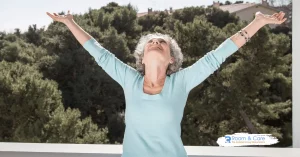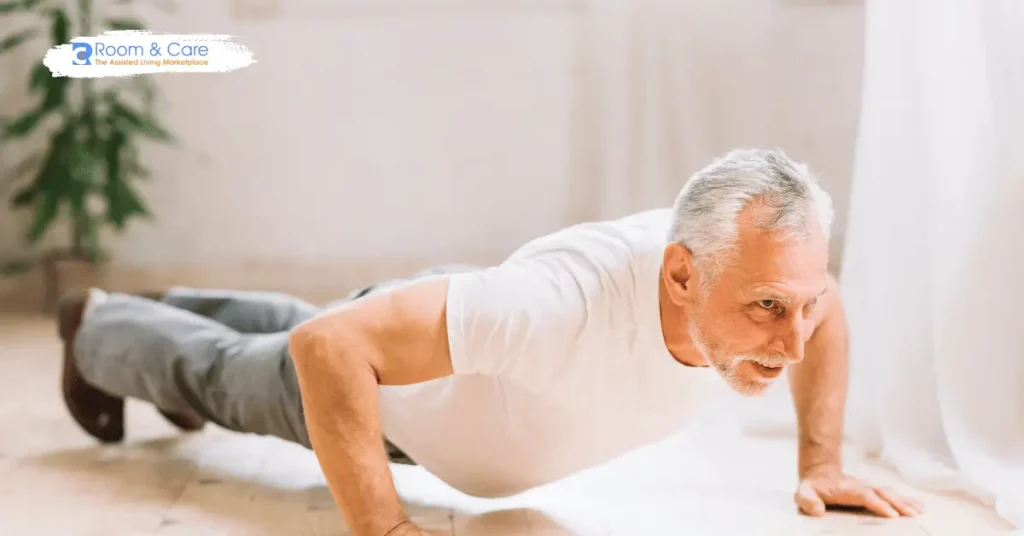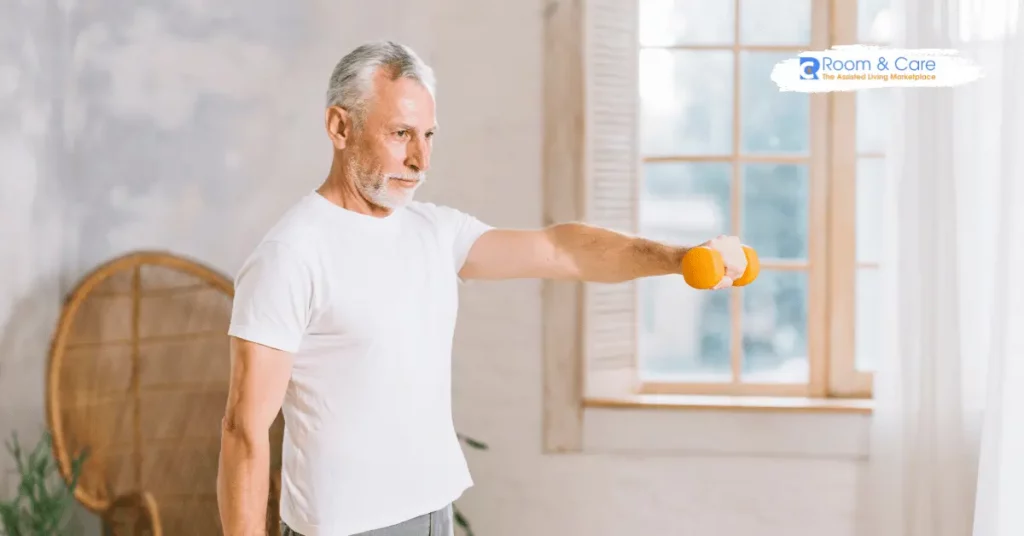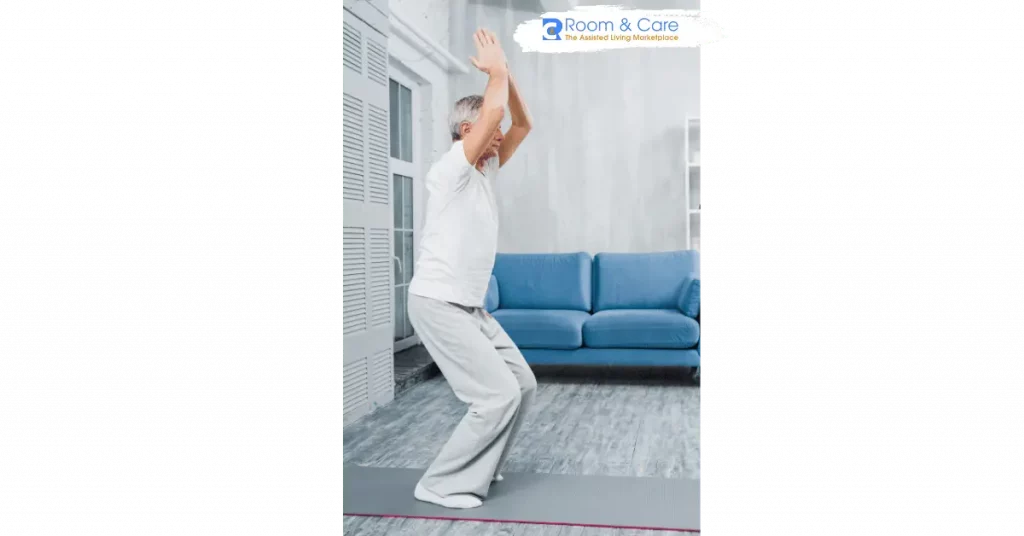

Fitness is an essential component of a healthy, independent life at any age, especially for men as they get older. For those in their golden years, maintaining strength, flexibility, and balance is more than just staying fit—it’s about sustaining vitality, enhancing mobility, and boosting quality of life. In this guide, we’ll explore key aspects of fitness for older men, from practical exercise types to crucial considerations, as well as tips for exercising in senior living communities like assisted living facilities or adult family homes. Let’s dive into how fitness can elevate health and well-being and how to make it a natural part of daily life.
Fitness routines designed for older men provide several benefits that improve both physical and mental well-being. Incorporating regular exercise can lead to improved cardiovascular health, reduced joint pain, enhanced flexibility, and boosted energy levels, which are all essential for maintaining independence.
Physical activity also supports brain health. Research from the National Institute on Aging shows that exercise positively affects memory, cognitive function, and mood, making it a powerful tool against age-related cognitive decline. Additionally, fitness routines often include social elements like group classes or fitness partners, adding a sense of community and engagement that benefits mental health and quality of life.
Is it safe for older men to lift weights?
Yes, weightlifting, when done with proper technique and guidance, can improve muscle strength and bone density, reducing the risk of falls and injuries.
How much exercise is enough?
Experts suggest older adults engage in at least 150 minutes of moderate aerobic activity or 75 minutes of vigorous activity per week, complemented by muscle-strengthening exercises twice a week.
What exercises are best for joint pain?
Low-impact exercises such as swimming, walking, or stretching can relieve joint pain by increasing flexibility and strengthening muscles around the joints.
A well-rounded fitness routine for older men should include a mix of cardio, strength training, flexibility exercises, and balance training. Let’s look at how each type of exercise can contribute to overall fitness and longevity.
Cardio exercises are essential for heart health, increasing lung capacity, and boosting overall energy levels. They can also aid in weight management, a factor that becomes increasingly important for older men to reduce stress on joints.
Strength training plays a crucial role in countering muscle loss, which naturally occurs with age. Maintaining muscle mass is important for everything from daily activities to reducing the risk of falls.
Flexibility and balance exercises can significantly reduce the risk of falls and improve coordination, both of which are essential for maintaining independence.

When designing a fitness routine for older men, several factors need to be taken into account, including health history, personal goals, and any existing limitations. Here are some essential considerations to ensure a safe and effective workout regimen.
Before starting any new exercise routine, especially one that includes weightlifting or vigorous cardio, it’s wise to consult with a healthcare provider. They can provide specific recommendations or restrictions based on any chronic health conditions, such as high blood pressure, diabetes, or arthritis.
For those with joint issues, low-impact exercises like swimming, cycling, or even brisk walking are ideal. These activities allow you to build cardiovascular strength without putting stress on sensitive joints. If you’re new to exercise, consider starting with shorter, less intense sessions and gradually build up.
Good nutrition is essential for supporting physical activity and recovery. Older men should ensure they’re getting enough protein to support muscle health, as well as plenty of fruits, vegetables, whole grains, and hydration to fuel the body.
It’s important to respect your body’s limits. Pain is an indication that something is wrong; pushing through pain can lead to injury, which is counterproductive to fitness. Pay attention to signals such as joint discomfort, dizziness, or shortness of breath, and stop if you experience any of these symptoms.
For older men who reside in senior living communities like assisted living facilities or adult family homes, fitness routines can often be easier to maintain. Many of these communities provide access to fitness programs and facilities specifically designed to meet the needs of their residents.
Room and Care offers a range of senior living options that can help support fitness goals, from assisted living facilities with exercise programs to adult family homes that provide a personalized and supportive environment. By connecting directly with senior living options without middlemen or referral fees, Room and Care ensures accessible, quality care options for every need.
Starting and maintaining a new fitness routine can be challenging, especially if exercise has not been a regular part of life. Here are some tips for building consistency and staying motivated:
For those living in senior communities, staying active might seem challenging at first, but these communities often provide resources to encourage movement.

Can older men still build muscle?
Yes, older men can still build muscle through strength training. Although muscle growth might be slower than in younger individuals, consistent weightlifting or resistance exercises can yield substantial improvements in muscle strength and density.
What if I have limited mobility?
For those with limited mobility, seated exercises, chair yoga, and water-based activities are great alternatives. Many exercises can be adapted to accommodate mobility limitations while still providing significant health benefits.
How long will it take to see results?
Results will vary depending on individual fitness levels and the types of exercises performed. However, most people notice improvements in energy levels and mood within a few weeks, with more noticeable physical changes typically occurring after three to six months of consistent exercise.
A consistent fitness routine for older men offers more than just physical benefits—it’s an investment in mental health, independence, and overall quality of life. Through activities like walking, swimming, strength training, and balance exercises, men can remain active, reduce health risks, and enjoy their later years with vitality.
Whether at home or in a senior living community, incorporating physical activity into daily life is both achievable and rewarding. For those seeking senior living communities that support an active lifestyle, Room and Care provides direct access to the best assisted living options and adult family homes, with no referral fees, ensuring that every individual can find a care environment tailored to their needs.
Take the first step, set achievable goals, and embrace the many rewards that come with fitness at every age.